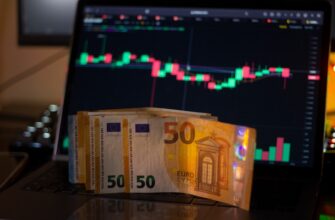What is SWISX ETF?
The Schwab International Index Fund (SWISX) is a low-cost mutual fund designed to track the performance of international developed market stocks outside the United States. Despite the common “ETF” reference in searches, SWISX is technically a mutual fund—though it shares many benefits with exchange-traded funds, including low expenses and broad diversification. This fund specifically follows the MSCI EAFE Index (Europe, Australasia, Far East), providing exposure to large and mid-cap companies across 21 developed nations.
Key Features of SWISX
- Ultra-Low Expense Ratio: At just 0.06%, SWISX is among the cheapest international funds available
- Broad Diversification: Holds over 900 stocks across multiple sectors and countries
- No Minimum Investment: $0 minimum for Schwab account holders
- Tax Efficiency: Rarely distributes capital gains due to low turnover
- Dividend Payments: Quarterly distributions from international corporations
Why Consider SWISX for Your Portfolio?
SWISX offers strategic advantages for investors seeking global exposure. Developed markets historically show lower volatility than emerging markets while providing growth opportunities unavailable in the U.S. market. The fund’s passive management approach minimizes costs while delivering market-matching returns. For long-term investors, SWISX serves as an efficient core holding to balance domestic investments and hedge against U.S.-specific economic risks.
SWISX vs. Comparable International Funds
- VS VXUS: Vanguard’s Total International Stock ETF includes emerging markets (which SWISX excludes) but has a slightly higher 0.07% expense ratio
- VS FSPSX: Fidelity’s similar fund charges 0.035% but requires $0 minimum only for Fidelity accounts
- VS IEFA: iShares Core MSCI EAFE ETF has identical index coverage but trades like a stock throughout the day
How to Invest in SWISX
- Open a Schwab brokerage account or IRA
- Fund your account via transfer, deposit, or rollover
- Search for SWISX using the fund ticker
- Purchase shares dollar amount or by number of shares
- Set up automatic investments for dollar-cost averaging
Understanding the Risks
While SWISX provides excellent diversification, international investing carries unique risks. Currency fluctuations can impact returns when converting foreign profits to U.S. dollars. Political instability in constituent countries and varying regulatory environments may affect performance. Additionally, the fund’s exclusion of emerging markets limits exposure to high-growth economies. Investors should view SWISX as a long-term holding (5+ years) to weather market volatility.
FAQ: SWISX ETF Questions Answered
Q: Is SWISX actually an ETF?
A: No, SWISX is a mutual fund. Its ticker and low-cost structure often lead to ETF comparisons, but it trades once daily at net asset value.
Q: What countries does SWISX invest in?
A: Top holdings include Japan (22%), UK (15%), France (12%), Switzerland (10%), and Germany (9%), with smaller positions in Australia, Singapore, and Scandinavia.
Q: Does SWISX pay dividends?
A: Yes, dividends are paid quarterly, typically in March, June, September, and December.
Q: Can I hold SWISX in my IRA?
A: Absolutely. SWISX is ideal for tax-advantaged accounts like Traditional, Roth, or Rollover IRAs.
Q: How often should I invest in SWISX?
A: Consistent monthly investments leverage dollar-cost averaging. Aim to allocate 15-30% of your stock portfolio to international exposure like SWISX.








